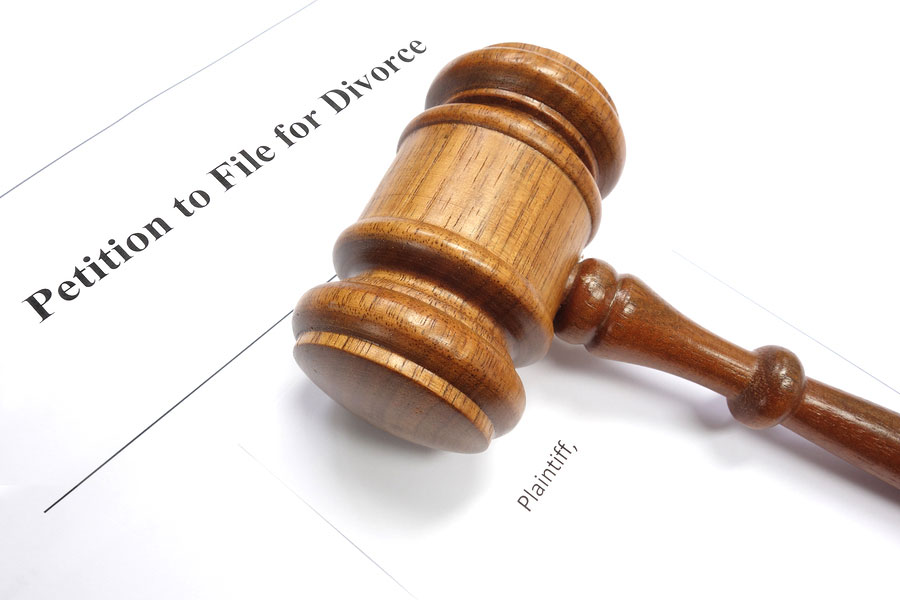Divorce Court Guide: What to Expect and How to Come Prepared
Going to a courthouse can be a nerve wracking experience, especially your first time. While every experience is different, there are always points of commonality. This guide is intended to give you a brief overview of what to expect, as well as basic rules of etiquette that will make your court experience more effective and less stressful.
Driving and Parking at the Courthouse
We are in the Bay Area, so remember when you’re coming to court to give yourself enough time to get through all of that traffic. Also be sure to allot time for actual parking once you arrive, and bring change for parking costs. Please get here early and give yourself time to relax and take a deep breath so you’re not all stressed out and worried before going to court!
Many hearings start at the same time, so keep in mind that you, along with dozens of other people, will be arriving at the courthouse around the same time. This is going to cause delays in entering parking garages, competition over convenient parking spots, and general traffic. You definitely do not want to arrive late to your court hearing.
Clerk Window Etiquette
There are times when you’ll visit the courthouse for non-hearing related reasons. This includes filing paperwork at the clerk’s window. The clerk window hours vary, so it’s a good idea to check the court’s website before you head out. The biggest tip I can give you for filing things in the clerk’s office is to be polite. Think of it like DMV – day in and day out, they are dealing with papers and angry unhappy people. The nicer you are to your clerks, the better results you’re going to get. Always come prepared, be organized, and don’t ask them for legal advice, because they’re not attorneys. Nothing irritates them more than people being rude, or people asking them to do things outside of their job. Remember what their job is – their job is there to help you. Don’t “shoot the messenger,” so to speak.
What to Wear to your Court Hearing
I prefer and always advise my clients to dress business casual, or as if they were going to an interview. You want be respectful, but you also want to be comfortable. Your goal is to appear professional and put together, so modest clothing, minimal makeup and jewelry. If you’re dressed professionally, you’ll feel professional, which is going to help you settle the nerves.
Remember, when you go to a court hearing, you should expect your life to change through the judge issuing court orders. The judge expects you to be respectful of the process, to respect the court, and to respect the legal system itself. It’s likely that you’re going to be nervous, but do your best to just fake it. The best way to fake it is with how you look. Wearing something nice, and specifically something that’s going to give you confidence, will make you feel a lot better about the process.
Security and Entry at the Courthouse
When you get to the courthouse, you’re actually going to go through something similar to airport security.
Expect a line, and depending upon the day or time, expect a very long line. Add this into your timeline planning along with traffic and parking. Once you get to security, expect an experience very much like TSA. You’re going to have to take off your shoes if you have metal in them, take off your belt and coat, and empty your pockets. No weapons or personal security items are allowed. One time, we had an associate attorney coming through with her pepper spray, and she not only held up the entire line, but she had her pepper spray permanently confiscated. To say she was a bit embarrassed would be an understatement. Some courthouses prohibit beverages, so it’s a good idea to err on the side of caution and leave all liquids in the car. Once you get past the metal detectors, you’re going to actually enter the main lobby of the courthouse itself.
If you followed my advice and arrived early, you’ll have time to take care of any last-second things. This includes double checking the location of your courtroom, reviewing your paperwork to ensure all is in order, and making a pit stop at the bathroom.
Before the Hearing Begins
Before your hearing, you need to “meet and confer” with the other side. That’s basically fancy schmancy legalese for, “You need to talk to the other person beforehand about the issues before the court.” The only exception is if there is a restraining order in existence. In all other situations, you definitely want to do participate in it beforehand. You’ll hear the judges say it over and over again: “Did you meet and confer?” And it’s not just you and the other party – it’s also the attorneys. Attorneys are also expected to meet and confer as well. When you look at the calendar docket, you’ll see that there are a lot of cases on for the morning of your hearing. If you think that you’re the only case on that morning, you’re in for a rude awakening. In reality, there’s anywhere from eight to sometimes even over twenty cases heard per judge, per morning, so the more you can narrow down the issues, the better off you’ll be. The judges are going to be much happier with you, and both sides will have clarity as to what the outstanding problems are. You’re going to get better results and everyone’s going to be a lot happier with the whole process.
When you arrive in front of your courtroom, look at the calendar outside of the door. Typically, there is going to be a list with all the names of the cases that are going to be heard that morning. Next to your name will be a number, which is called a “line number” and is separate and apart from your case number. Your clerk will thank you if you know what line number you are, if you’re the petitioner or respondent, and which calendar you’re on. The more organized you could be for your clerk when you check in, the better.
Many courtrooms also post the judge’s rules outside of the doors. General rules include no cell phones, no chewing gum, and no interrupting the judge. Some judges will post whether they prefer for you to check in with the courtroom attendant or bailiff. Think of the attendant or bailiff as the judge’s right-hand person, and follow that person’s directions. Often times that person will verbally announce the courtroom rules that you are expected to follow.
When you enter the courtroom, check in if you need to do so. If in doubt, pay attention to what other people are doing and follow their lead. If you check in, make sure you tell the person your name, line number, and if applicable, the time of your hearing. Take a seat in the audience. If there is a restraining order in place, make sure you don’t sit next to the other party. Otherwise, feel free to sit anywhere other than the jury box or past the courtroom “divider.” You may notice people sitting in the jury box, but those seats are reserved for attorneys and court staff. Don’t worry – it’s highly unlikely that you will ever be faced with a jury trial in a family law matter.
After you take a seat, take a minute to inventory and turn off your electronic devices. You need to put them on silent or turn them off completely – vibrate mode is not silent. Make sure you take your hat off, put away sunglasses, and rearrange your paperwork to avoid making any noise while court is in session. Recording anything that happens during court is strictly prohibited.
Most of the judges will do something called a “roll call” when he or she comes out on the bench. It’s not very different from when you were in school The judge will sit down and start going through the calendar, calling out name by name. When your name is called, make sure you announce your presence loudly and clearly so that the judge hears you. This is not the appropriate time to argue or present your case, as the judge is simply trying to organize the morning calendar and determine what case to call first. Sometimes the judge will have questions for you during the roll call. Sometimes the judge will say something like “Have you seen the other party?” or “Are you expecting the other party to appear?” or, “Have you served the other party?” Do your best answer the judge’s questions, and if you don’t understand, just say so. The judge would rather know that you don’t understand the question up front, rather than continue a conversation where both of you get lost.
Conclusion
Going to court is a tool to help you successfully get through your family law matter. I know it’s intimidating, but like most things in life, preparation, listening more than talking, and respect will get you far. Hang in there, and remember why you’re doing what you’re doing. Whether it’s to protect your child, ensure your future, or both, keeping your eye on the goal will keep you focused.





